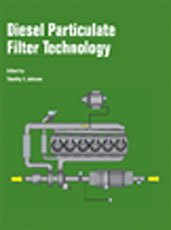Technical Paper
A Case Study in DOC OBD Limit Parts’ Performance and Detection
2021-04-06
2021-01-0438
The reduction of automotive emissions is instrumental in the fight against air pollution and its impact on global warming. This realization has empowered governments around the world to mandate lower levels of vehicle emissions requiring the Original Equipment Manufacturers (OEMs) to implement advanced aftertreatment technologies in their applications. Achieving emission levels as low as SULEV30 or SULEV20 would have been impossible only a couple of decades ago, however, these lower levels of emissions are now a possibility through advanced control strategies and aftertreatment systems. As a part of this mandate to lower emissions, OEMs are also continuously monitoring the health and performance of their aftertreatment and control components. The implementation of On Board Diagnostics (OBD) ensures that control systems are functioning robustly and the emission levels are achieved and maintained to high mileages for the life of the vehicle.

